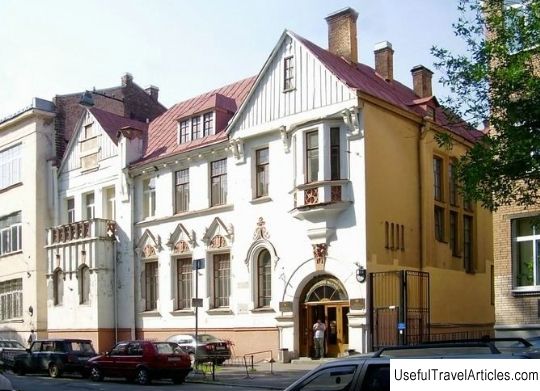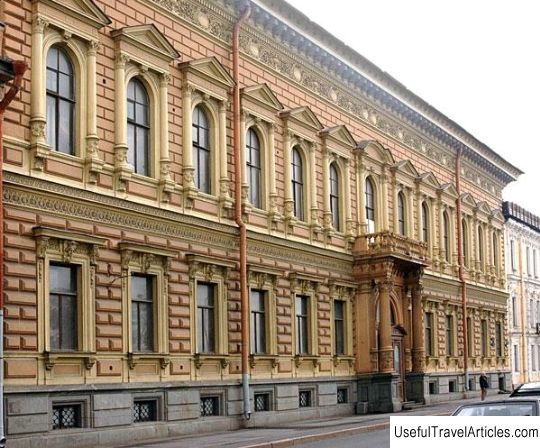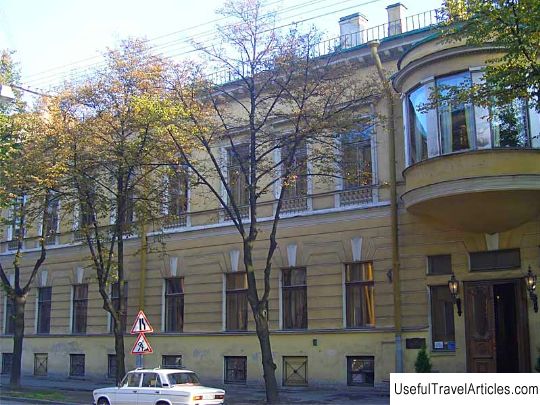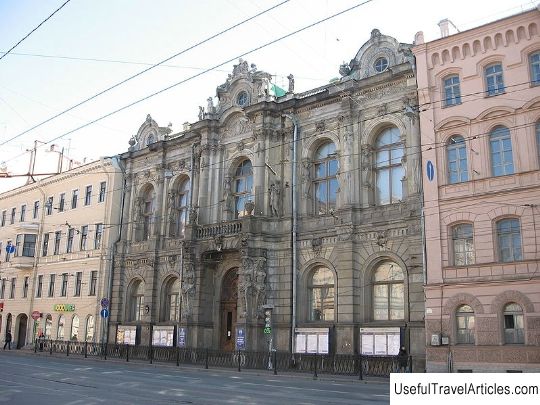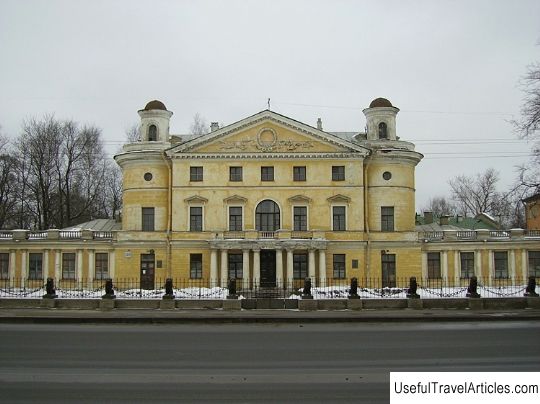Kelch's mansion description and photos - Russia - Saint Petersburg: Saint Petersburg
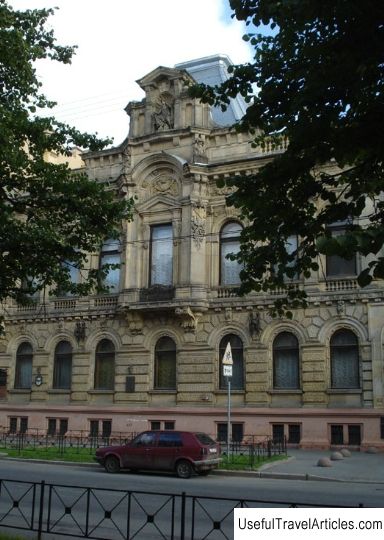
Kelkh's mansion description and photos - Russia - Saint Petersburg: Saint Petersburg. Detailed information about the attraction. Description, photos and a map showing the nearest significant objects. Photo and descriptionIn St. Petersburg, on Tchaikovsky Street (formerly Sergievskaya), there is a mansion owned by a gold miner, businessman, descendant of Russified Germans, Alexander Ferdinandovich Kelkh. The structure, due to some peculiarities, differs from other mansions and residential buildings that are located on this street. The facade of the front side of the mansion is made in the style of the French Renaissance, while the courtyard facades bear the features of the Gothic style. In the motives of the richly decorated interiors (in addition to the Gothic and Renaissance), one can guess the Rococo style. The authorship of the development of the project of the mansion and the decoration of its interiors belongs to the architects Vasily Ivanovich Schoene and Vladimir Ivanovich Chagin. The project was approved in 1896, and already during the construction of the mansion, significant changes were made to the project, as a result, it had to be re-approved in 1903, when the building was already partially built. The front of the house is finished with sandstone on the front side - the ground floor is faced with pink, the rest of the floors - light yellow. The interior decoration of the mansion is elaborated in detail and executed using extremely sophisticated techniques. The design harmoniously intertwined various techniques and styles: the staircase of the main entrance in the characteristic Renaissance style, a detailed composition in the Gothic style decorates the dining room with stained glass windows, the living room in the Rococo style. In the decoration of the interiors, sculpture, carving, stucco molding were used. The courtyard of the house is also interesting from the point of view of the integrity and completeness of the architectural solution. The service (stable) wing completes the courtyard perspective. Brick walls, which it was decided not to plaster, contrast with the skilfully executed decoration and the openwork pavilion in the Gothic style. Above the aisle in the backyard, there is an arch in the same Gothic style. The spectacularly executed study, which contains a huge fireplace, a grand staircase, a living room decorated with a stucco plafond, a rich Gothic dining room, deserves attention. Alexander Kelkh bought a large number of decorative exquisite objects of the great masters. For example, the Easter eggs that Kelch ordered from Carl Faberge could only be afforded throughout Russia by the oil industrialist Ludwig Nobel, the emperor and A.F. Kelch. For Kelch's wife, Faberge personally selected rare jewelry. Kelch's fate is of particular interest. Kelch did not leave Russia after the October Revolution, but preferred to stay and worked in Siberia as an ordinary worker, at his former factory. Later, in the 1920s, Kelch returned to St. Petersburg. But attempts to get a job were unsuccessful, he was forced to sell cigarettes on the street, beggar. It all ended with Kelch being arrested in 1930 and sent to Stalin's camps. Nowadays, at many auctions you can find jewelry from the rich collection of Alexander Kelch. The Kelkh mansion was severely destroyed during the blockade years, but was restored in 44-45 years of the last century. The UNESCO Center in St. Petersburg was located in a mansion in the 1990s. In different years of the Soviet period, various organizations were located in the building. For example, since 1919, the world's first educational institution of cinematography worked here, in which many cultural figures were trained in acting and directing. So, in 1924 Vasiliev Sergey Dmitrievich graduated from the institute, who later created the legendary Soviet film "Chapaev". At that time, the building was not heated, and the students called the mansion "Ice House." Most recently, the former mansion was transferred to the ownership of the Ministry of Justice.          We also recommend reading Tompkins Square Park description and photos - USA: New York Topic: Kelch's mansion description and photos - Russia - Saint Petersburg: Saint Petersburg. |
